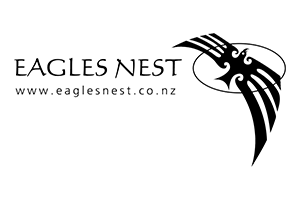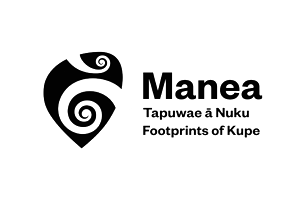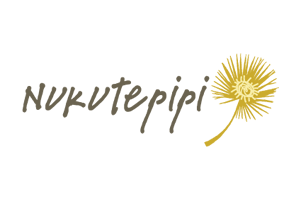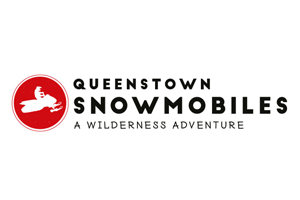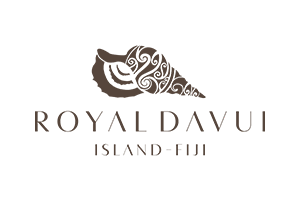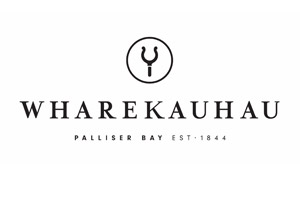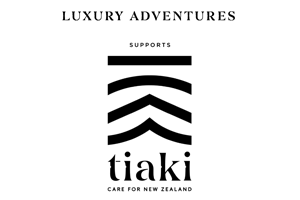Fiordland
Fiordland is a geographic region of New Zealand, which is located on the south western corner of its South Island. Regarded as one of the most awe-inspiring and beautiful parts of New Zealand, this region is carved by glaciers that are over 100,000 years old. Its landscape includes ancient rainforests that clasp to mountains and are still untouched by man. Its shimmering lakes and lustrous granite peaks appear, just the way they did a thousand years ago. Maori were the first people that discovered the bounties of Fiordland, and since then man has appreciated the beauty of this region. Fiordland is one of the southern hemisphere’s great wilderness regions. In 1986, this New Zealand region was awarded the World Heritage status for its breathtaking natural beauty, exceptional glamour and significant role in demonstrating the earth’s evolutionary history. Fiordland’s wild life is very contrasting and rich. It is a shelter for native New Zealand birds like Kaka, Tui, Kea, Bellbird, Native Pigeon, Tomtit and Grey Warbler, and the endangered Takahe species.
Te Anau is a small delightful town, situated on the shores of Lake Te Anau. It is the portal to the southern wilderness area of Fiordland National Park and Milford Sound, and also the departure point for many hiking tracks, among which three are regarded among the best in the world. Fiordland National Park is considered a World Heritage Site, which includes Milford, Dusky and Doubtful Sounds. Rudyard Kipling has described Milford Sound as the Eighth Wonder of the World. If you are big on hiking, then this is the place for you. Fiordland National Park has three of New Zealand’s most revered walking tracks, namely the Milford, Kepler and Routeburn Tracks. Milford Track is perhaps the most famous of them all. The Milford Track is over 53 kilometers and starts in Te Anau, the track takes you through the most stunning sceneries such as rugged mountains, lakes and tremendous valleys, all the way to the Sutherland Falls, which is the tallest waterfall in New Zealand.
You can find an assortment of accommodation available on the track, ranging from the most basic hiker’s hut to more luxurious huts. You can also take a closer look at the marine life that thrives in the fiords. These fiords are home to New Zealand fur seals and bottlenose dolphins, Fiordland crested and little blue penguins, and visiting whales. Scenic cruises and kayak tours are available for tourists to explore these mystical fiords and the wildlife that dwells in these waters. Milford Sound’s annual rainfall is very high, which combined with it characteristic narrow shape creates a fresh water layer on top of the seawater. This fresh water layer allows species that live in deep waters, to come up to a much shallow range. If you wish to experience the rich ocean life of this region, then Milford Sound Underwater Observatory and guided dive tours will give a closer glance of many rare species such as the red and black corals. Fiordland is the ultimate wild life adventure, which is exclusive to New Zealand. You will not find such beauty, diversity and subtlety anywhere else in the world.
Milford Sound “For thousands of feet upwards the eye looks upon straight cut rocky frontages, not worn smooth by time, or by wind or water, but as sharply defined and as fresh looking in all respects as if riven asunder but yesterday by the stupendous wedges of Titanic Masons.” James Hingston 1883. The Maori were the first to note the creation of the fiords to a “titanic mason”, Tute Rakiwhanoa who cut out the steep sided valleys with keen edged adzes. No other explanation seems to fit, as it is impossible to comprehend the sheer breadth of geological events that created this seemingly perfect sculpture, as steep cliffs rise vertically upward from the ocean. Wet or fine Milford is incredibly regal. Mitre Peak magnetises photographers, and the fiord’s sheer cliffs astound both apprehension and admiration. Milford is by far the best known of all of the fiords in New Zealand and the only one that can be accessed by road. It is approximately 16km from the head of the fiord to the open sea, which means visitors can pleasantly travel the length of the fiord to open ocean and return on one of the many cruise options available in one and a half to two hours cruising time. For the ultimate Fiordland experience we recommend a scenic heli trip – a 4 hr heli adventure through the indomitable Milford Sound, Sutherland Falls, Tutukou glacier and beyond. This consistently rates as the most memorable experience for our guests. Just ask our team for more details on a privately guided Fiordland heli trip.
Doubtful Sound Visitors feel overcome and yet uplifted by the atmosphere of powerful solitude in the presence of magnificent physical grandeur of Doubtful Sound. Sometimes called “the Sound of Silence” Doubtful Sound is quiet in terms of tourist numbers which contrasts with Milford Sound and this is mostly due to accessibility. The fiord is rich in flora and fauna, Fiordland Crested Penguins and New Zealand Fur Seals can be seen on many of the small islets in the entrance of the fiord. At 421 metres deep Doubtful is the deepest of the fiords and is long and winding with three distinct “arms” and several exceptional waterfalls in the area from Deep Cove to the open ocean, a distance of around 40.4 kilometres. With no road in to Doubtful Sound access is limited – However a popular addition to the Fiordland heli experience is to add Doubtful sound on. Just ask for more details on the Fiordland/Doubtful Sound heli trip.
The Milford Road: The Milford road is a amazing alpine drive. Visitors need to allow plenty of time to stop at the many viewing points or short walking opportunities en route, just to get out of the car and soak up the spectacular scenery and the sheer magnitude of the landscape. At 119km (approx 74 miles) from Te Anau to Milford Sound the sealed road takes a minimum of 2 hours driving without allowing for stops.
Play Intro Video
Activities
Scenic Highlights
Choose a Walk and Discover Fiordland
Milford Track (53.9km) is often described as the finest walk in the world. It enters several glaciated valleys, climbs over an alpine pass and sidles along some incredible scenery. The Milford Track walk takes four days and boat travel is needed at both ends. You can walk on your own steam or hire a private guide for this track. Routeburn Track: (39km) The Routeburn starts just under an hours drive from Queenstown and ends not far from Milford Sound, although it can be walked from either direction. Mountainous alpine views, lakes and changing tree and foliage types can be experienced usually over the summer season on this walk. You can walk independently or take a guide.
Kepler Track
(67km) The Kepler is a loop track which starts and then finishes at Lake Te Anau. You’ll see Lake Te Anaus edges, west coast beech forest, alpine mountaintops and some glacial valleys complete with resplendent vistas of the Southern divide. The Kepler Track offers independent walks only.
Hollyford Track
(80km) leads the walker from the sheer rock walls of the Darren Mountains down to the sand dunes of the Tasman Sea at Martins Bay. Experience the splendid isolation of the Fiordland bush, the bustling energy of the Hollyford River and the sand and windswept beauty of Martins Bay. Both independent and guided walks are available on this track.
Dusky Track
(90km) is best suited to those with experience. Various options allow the traveller to spend five to seven days following three major river valleys. Climb two passes culminating in the arrival at Fiordland’s largest and most extensive fiord – Dusky Sound. This track offers independent walks only.
The Surreal Beauty of Milford Sound
Milford Sound, described by Rudyard Kipling as the ‘eighth wonder of the world’, was carved out during successive ice ages and, at its deepest point off Mitre Peak, plunges to a depth of 265 metres. The grandeur of Milford Sound can be appreciated from the air or water. Bowen Falls, hurtling 165 metres into the sea, and the Stirling Falls further down the sound, set amidst the towering cliffs and dwarfed by Mitre Peak, are truly spectacular after rain. Bottlenose dolphins, New Zealand fur seals and Fiordland crested penguins are resident in the fiord and can be viewed up close from the launch cruises or kayak trips.
Doubtful Sound - Off The Beaten Track
You’ll feel humbled yet uplifted by the atmosphere of powerful solitude in the presence of superb physical grandeur of Doubtful Sound. Sometimes called “the Sound of Silence” there is a cloistered serenity within Doubtful Sound that contrasts with Milford Sound. The fiord is rich in flora and fauna, New Zealand Fur Seals and Fiordland Crested Penguins can be seen on many of the small islets in the entrance of the fiord.
Any other questions?
Please get in touch here
Activities
- Take a spectacular scenic heli flight over Fiordland National Park View crystal clear lakes, glacier carved fiords and endless snow clad mountains
- Cruise around Milford, Doubtful, Dusky or Breaksea Sounds. The native New Zealand fauna, steep rock faces and waterfalls that cascade into the sounds are an awe inspiring sight. Local inhabitants include bottlenose dolphins, New Zealand fur seals and Fiordland crested penguins
- Sea and lake kayaking is an active way to explore Fiordland in a small, personalised group
- Try sailing on the picturesque Lakes of Te Anau and Manapouri
Take the two and a half hour trip to Te Anau Caves and glow-worm grotto on the edge of Lake Te Anau - Participate in a guided day walk on either the Milford, Kepler or Routeburn Tracks. We can arrange a private guide who will explain about the unique flora and fauna and many other aspects that you’ll see and encounter along the way, or walk them by your self, but be sure to book well in advance.
- Milford Deep underwater observatory is situated in the middle of Piopiotahi (Milford) Marine Reserve It enables visitors to view a completely natural and unaffected marine community without getting wet!
- Take a diving excursion on a cruise or as a full day guided trip from Te Anau. The visibility is great and the water warmer than you think!
- A little wilderness troutfishing? Brown and rainbow trout are all wild and self-sustaining with the average fish weighing one-two kilograms. Fish weighing 5+ kilograms (over 10lbs) are also possible.





